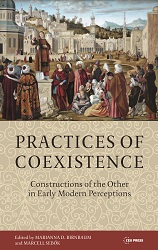Topography of a Society
Topography of a Society
Muslims, Dwellers, and Customs of Algiers in Antonio de Sosa’s Topographia, e Historia General de Argel
Author(s): Johanna Tóth
Subject(s): Middle Ages
Published by: Central European University Press
Keywords: middle ages;ottoman empire;Antoni de Sosa;
Summary/Abstract: After the conquest of Constantinople in 1453, the number of treatises on the “Turks” multiplied. The Ottoman Empire attracted the attention not only of informed humanists (some of whom referred to the “Turks” as the “new barbarians”) but of wider European polities. They gathered a variety of information on the “enemy” threatening their borders, and thus data on the “religious Other” reached Christendom through many channels: through people from different regions, backgrounds, and education, via certain modes of encountering the “Turk.” Therefore, information on the “Turks” varied considerably.While in most cases “Europeans” conceived of the “Turks” (or “Moors”or “Saracens”) as a homogenous group, some accounts presented a more nuanced view of Muslims. This study follows the results of the recent scholarly debate that has emphasized this varied image of them in Europe.
Book: Practices of Coexistence. Constructions of the Other in Early Modern Perceptions
- Page Range: 103-141
- Page Count: 39
- Publication Year: 2017
- Language: English
- Content File-PDF

